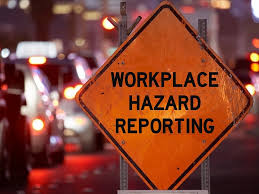What Are the Best Practices for Incident Reporting in High-Risk Environments?
In high-risk environments, the ability to report incidents effectively is crucial for maintaining safety and preventing future occurrences. Be it in industries such as healthcare, construction, or chemical plants, clear and detailed reporting can help organizations identify hazards, minimize risks, and comply with regulations. Proper incident documentation ensures that corrective measures are swiftly implemented and future incidents can be avoided.
A well-established accident reporting software serves as the mainspring for continuous improvement in safety protocols. It allows for the timely identification of patterns and issues that might otherwise go unnoticed. As high-risk environments often involve complex operations, having a robust reporting mechanism can mean the difference between preventing a minor setback and managing a full-blown crisis.
Timely Reporting and Immediate Action
In any high-risk setting, the promptness of incident reporting is vital. Immediate action after an accident helps prevent further damage and safeguards personnel. Delays can lead to unaddressed hazards, which could escalate into severe incidents.
- Ensure swift response: A fast response prevents complications, which ensures that an incident is taken care of before causing more harm.
- Accurate timestamping: Record the exact time the event occurred to help identify the root cause more efficiently.
By reporting incidents as soon as they occur, organizations can respond quickly, minimize harm, and ensure that critical information is captured while still fresh. This step is vital for both immediate actions and future prevention efforts.
Detailed Documentation for Effective Analysis
Clear and precise documentation is the cornerstone of effective incident reporting. Providing all relevant details, such as what happened, where it occurred, and who was involved, allows for thorough investigations. It also provides insight into what can be done to avoid similar incidents in the future.
Comprehensive Risk Assessment Following Each Incident
After an accident is reported, conducting a risk assessment is essential to understand the full impact of the event. This process involves reviewing the incident’s cause and evaluating the potential risks it posed to safety, health, or the environment.
Analyzing the incident helps determine whether additional precautions or safety measures are necessary. It also assists in identifying areas for improvement in current safety protocols. Regular risk assessments also prepare organizations for future incidents by highlighting vulnerabilities that may require attention.
Employee Training for Effective Reporting
In high-risk environments, employee training is fundamental to ensure that incidents are reported accurately and promptly. All employees should be trained to recognize hazards and understand the proper reporting procedures. Clear guidelines and effective communication channels are necessary to make the reporting process simple and accessible for all staff members.
Maintaining Confidentiality and Non-retaliation Policies
Confidentiality is a key factor in incident reporting, as employees must feel comfortable reporting without fear of retaliation. High-risk environments often involve sensitive situations, and protecting the identities of those reporting ensures honest and open communication. Establishing a strong non-retaliation policy encourages workers to report incidents promptly, knowing they won’t face negative consequences for doing so.
The Significance of Incident Reporting Tool
Incident reporting software streamlines the process of capturing, managing, and analyzing incidents in real time. This software centralizes data, improving accessibility and accuracy while reducing the risk of human error. By utilizing automated workflows and instant notifications, organizations can ensure that incidents are reported and acted upon without delay, enhancing overall safety.
read more : Understanding the Different Types of Lines of Credit
Effective incident reporting in high-risk environments is fundamental to ensuring workplace safety and regulatory compliance. Timeliness, detailed documentation, risk assessments, employee training, maintaining confidentiality, and using accident reporting software are all critical components. By following these best practices, organizations can create safer environments and reduce the likelihood of future incidents.

